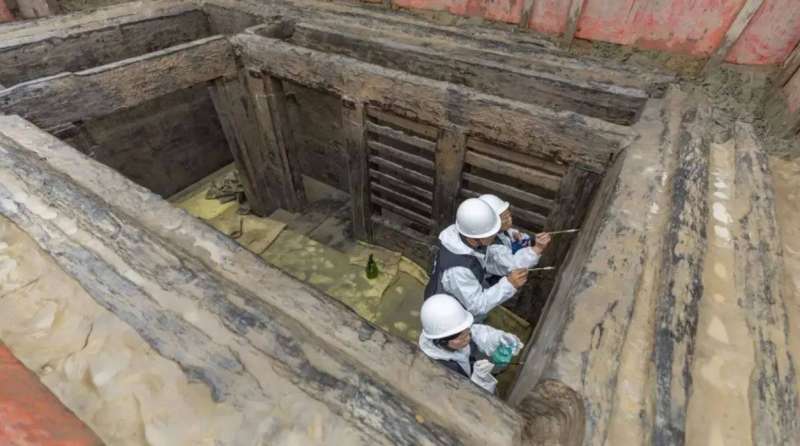31/12/2023
31/12/2023

A groundbreaking discovery unfolds as archaeologists in China uncover a unique "celestial calendar" within an ancient cemetery. This unprecedented find involves a set of mysterious rectangular wooden artifacts associated with an ancient astronomical calendar, revealing a glimpse into the past.
The excavation took place in a remarkably well-preserved tomb dating back 2,000 years in the southwestern region of China, as reported by the Live Science website. The 23 wooden pieces, measuring approximately an inch (2.5 cm) in width and 4 inches (10 cm) in length, bear Chinese characters linked to the "Tiangan Dizhi" or "Ten Heavenly Stems and 12 Earthly Branches," an ancient Chinese astronomical calendar established during the Shang Dynasty (1600 BC to 1045 BC).
Speculations among archaeologists suggest that one of the pieces might have represented the contemporary year, while the remaining 22 pieces could have been instrumental in determining specific years within the ancient calendar. Despite this intriguing insight, the operational mechanism of this orthographic wood cutting kit remains unclear.
This discovery marks the first instance of finding such a significant relic within an ancient tomb, introducing a novel dimension to historical understanding. The practice of inscribing characters on wooden or bamboo strips was common in China before the advent of paper. Unearthed earlier this year in the Wolong area, approximately 870 miles (1,400 kilometers) southwest of Beijing, the wooden pieces, along with various artifacts, offer a captivating glimpse into China's ancient astronomical practices.


